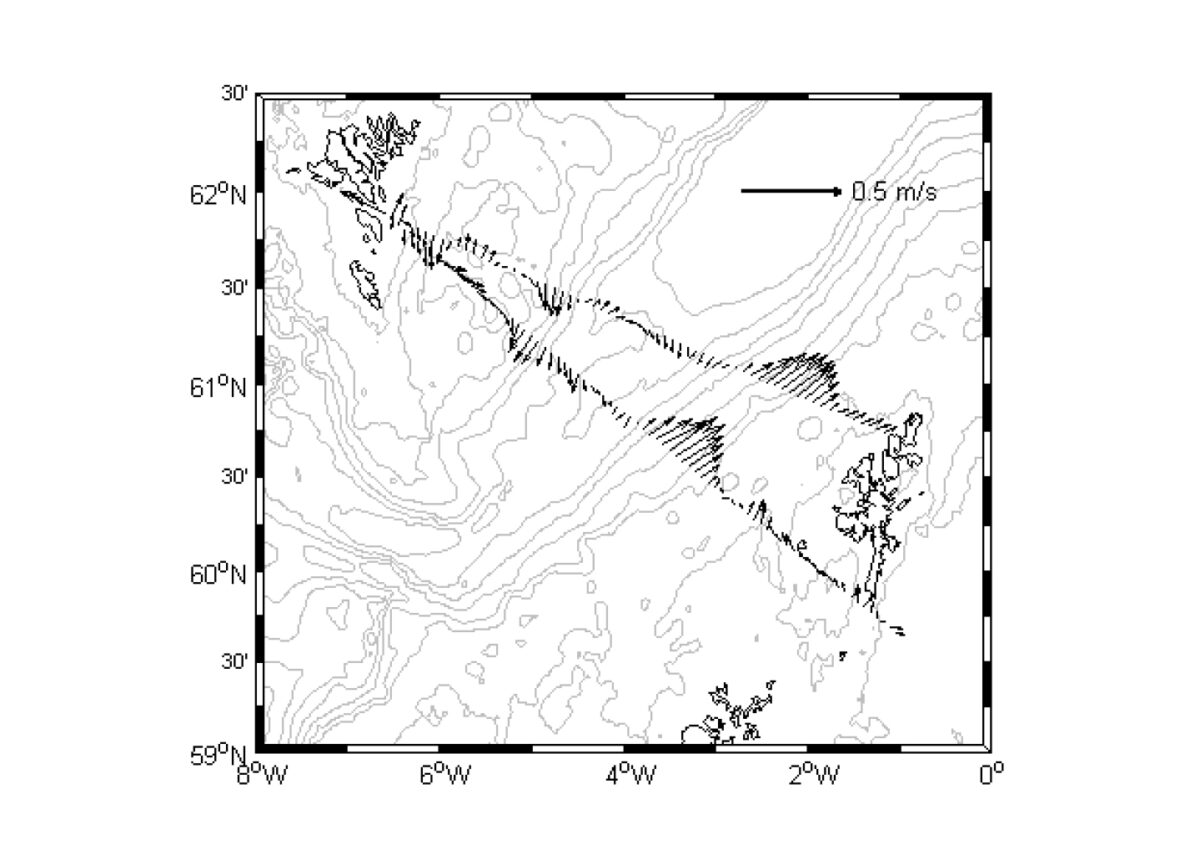Four and a half years of data collected by the M/F Norröna and analyzed by Childers et al. provide an unprecedented view of the volume of water that flows north from the Atlantic through the Faroe-Shetland Channel (FSC) and over the Iceland-Faroe Ridge (IFR) to the Nordic seas. Understanding how much water makes this trip is important because changes in that water volume are both indicators and instigators of changes in the climate.
Previous studies of the water flow relied primarily on a handful of acoustic Doppler current profilers (ADCPs), which measure the time it takes for a signal to leave and return to the instrument and reveal the water velocity, anchored to the ocean floor. The Norröna had an ACDP mounted to its hull. On each of the Norröna’s 132 trips over the FSC and IFR, its ACDP collected data that were high resolution in both time and horizontal space.
From these data, the authors calculated the mean water transport through the FSC (a total of 1.5 million cubic meters per second) and the IFR (4.6 million cubic meters per second). In addition, they calculated the amount that these volumes differed from week to week and year to year. Overall, the volumes were slightly lower through the FSC than indicated by previous lower-resolution observations. The authors explain that their new study emphasizes the need for long-term observations of the region to deduce regular patterns and long-term shifts. (Journal of Geophysical Research: Oceans, doi:10.1002/2014JC009946, 2014)
—Shannon Palus, Freelance Writer
Citation: Palus, S. (2015), A ferry keeps tabs on water headed northward near Iceland, Eos, 96, doi:10.1029/2015EO022745. Published on 27 January 2015.
Text © 2015. The authors. CC BY-NC 3.0
Except where otherwise noted, images are subject to copyright. Any reuse without express permission from the copyright owner is prohibited.

